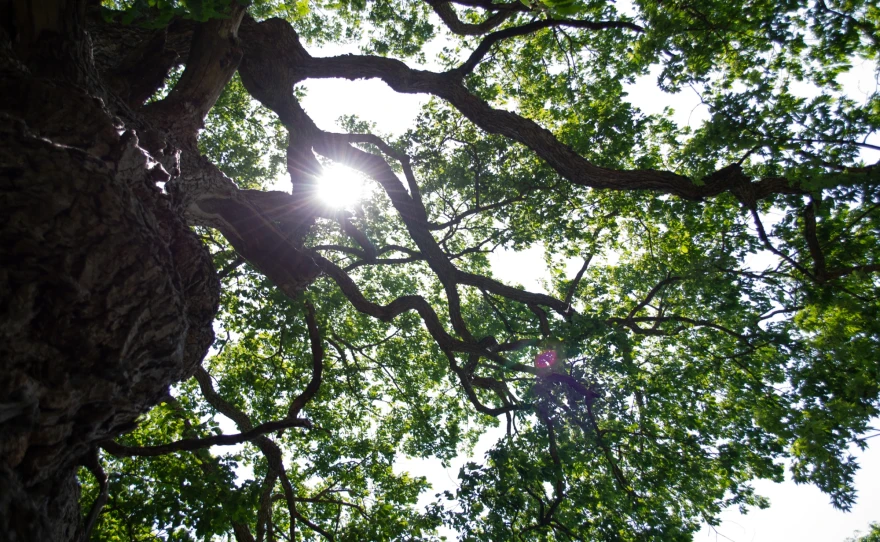Read the original story on WMRA's website.
The Virginia Big Tree Program, housed at Virginia Tech, keeps track of the largest specimens of more than 300 tree species across the state. Its database includes six national champions in the Shenandoah Valley and Central Virginia.
In Harrisonburg’s Woodbine Cemetery, a stately Fraser fir tree rises 96 feet above the graves of people who died in the 1880s. Ivy winds its way up the trunk. Just down the hill, the tombstones of Confederate soldiers sit.
Based on a formula that factors in the tree’s height, trunk circumference and the spread of its branches (aka crown spread), this is the largest documented Fraser fir in the entire country. According to Jeremy Harold, greenspace manager for the city of Harrisonburg, the tree’s exact age is unknown because “you’d have to cut it down and count every ring.”
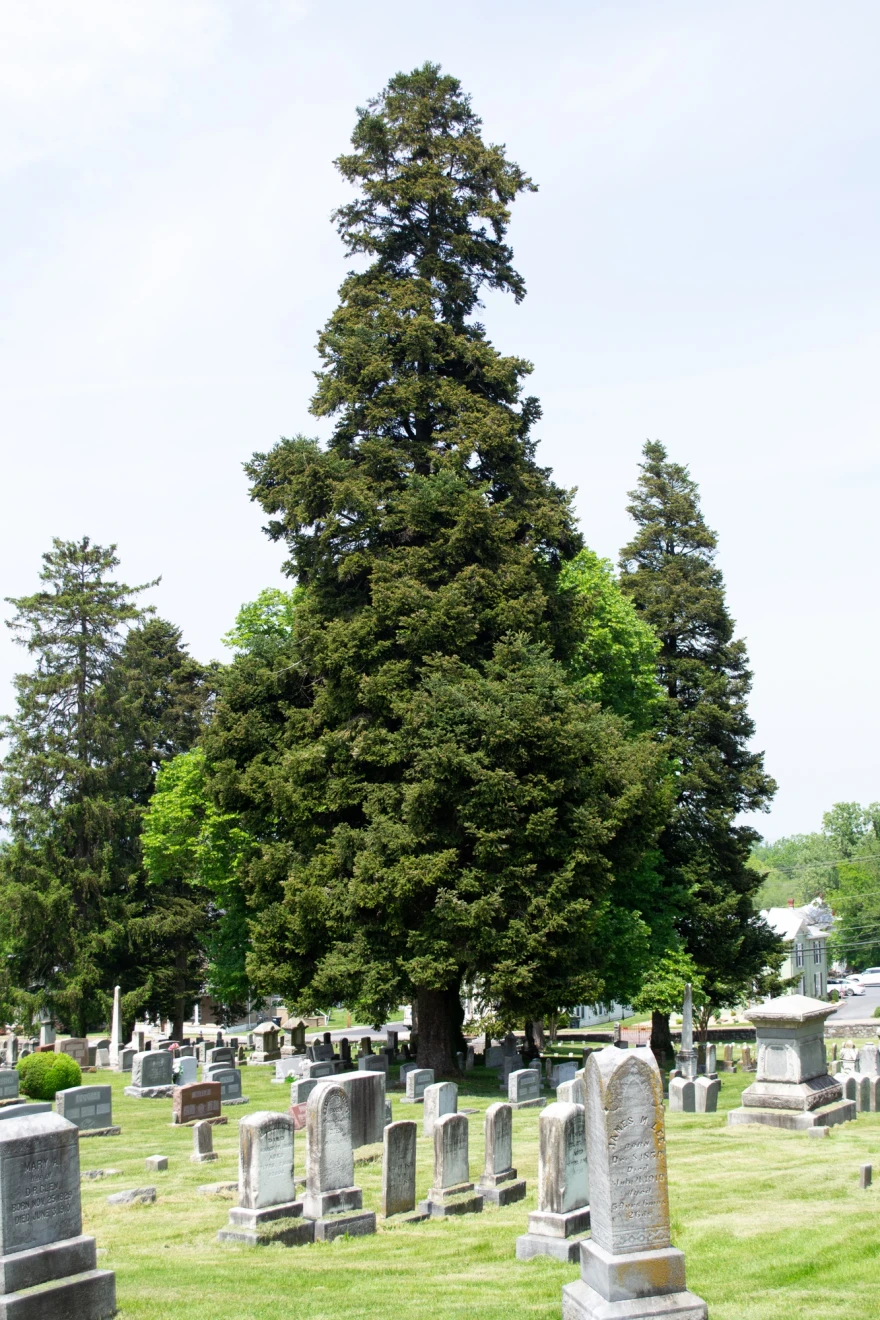
Harold guesses that the tree is somewhere between 100-150 years old.
That seems likely, based on the historical records available. The History of Woodbine Cemetery, by J. Nelson Liskey, says the graveyard was chartered in 1850, and the trustees spent those early years “beautifying the grounds, building walls, [and] planting trees.”
So, who's keeping track of these giant trees? That job falls to Eric Wiseman, an associate professor at Virginia Tech and coordinator of its Big Tree Program. The standard measuring system combining height, girth and crown spread was invented by Fred Besley, Maryland’s first state forester.
“One of his primary intentions for coming up with the Big Tree scoring system was to call attention to … uncontrolled, unmanaged, unregulated logging,” Wiseman said. “But then also, he was hoping that if we found these, what we call large-volume trees, and we called attention to them, that it might afford them protection, thereby afford protection to their genes.”
One of the most prolific big tree hunters in Virginia — as recognized by his peers — is horticulturalist Byron Carmean, who first nominated that Harrisonburg Fraser fir in 1988. He's from the Chesapeake area, and back in 1983 he saw the Big Tree program featured in an issue of Virginia Forests Magazine.
While reading that issue, Carmean said, “I would see one and I’m thinking ‘I think I might have seen one bigger than that.’”
That kicked off Carmean's 40-year quest to find big trees. One time, his endeavors caused some interstate strife with tree enthusiasts in Kansas — when he and fellow tree hunter Gary Williamson discovered a huge American elm while canoeing on the Nottoway River in Southside Virginia. The previous reigning champ was a 99-foot tree in Kansas nicknamed the “Louis Vieux” after a fur trader who once owned the land there.
“Well, our tree beating the one in Kansas just totally upset the apple cart for everybody! They had a delegation of people from Kansas to come to Virginia to make sure that we weren't fudging somehow,” he said.
The struggle for arboreal dominance lasted about two years. An article in the New York Times from 1988 reads, “The reigning king of American elms, a 125-foot behemoth on a farm in Southeast Virginia, is stricken with Dutch elm disease and has only a year to live… News of the Sebrell elm's demise will not be unwelcome in Kansas.”
Sadly, the Virginia elm did die shortly thereafter.
Another beloved national champion grows in Rockingham County, on the banks of the South Fork of the Shenandoah River. It's a majestic Chinkapin oak that stands more than six stories tall. Its tangle of branches stretches to an average wingspan of 113 feet across.
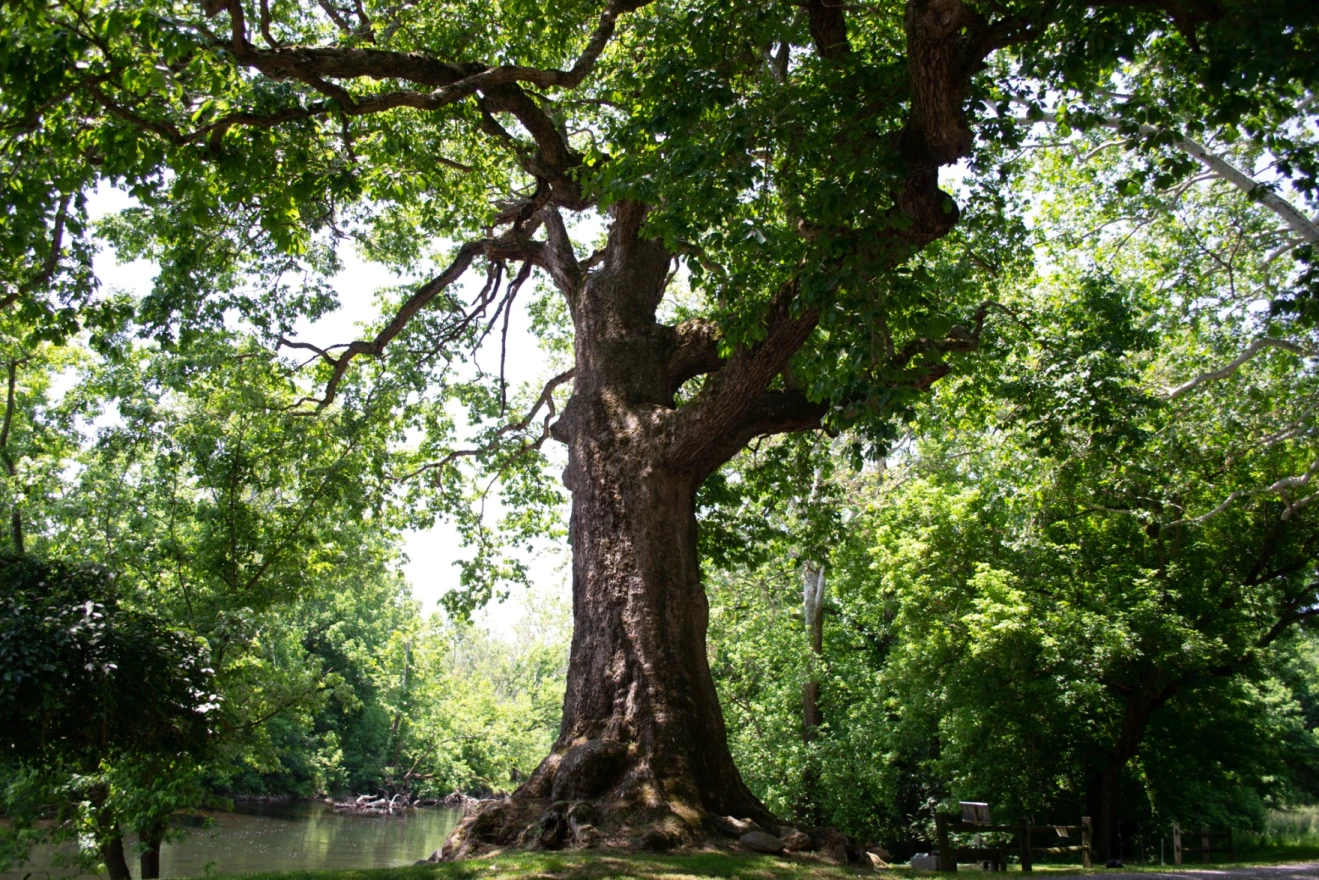
A local family has cared for this tree for at least four generations, as Edward Strickler Jr. told me via email. It stands near the site of his great grandfather J. A. Davis's mill, which ground various grains and flours until it burned down in 1929.
Strickler recalls helping his grandfather clean the fish they pulled in under the oak's foliage. And local legend has it that a young Patsy Cline — who lived in Elkton for a time — visited the tree.
In Albemarle County the national champion Blackhaw, a type of viburnum, stands in a sunny, rolling meadow. The field lies along a little dirt trail that takes you through the 150-acre "Secluded Farm" property.
I met retired forester Jon Rockett there. He and his wife Yvonne volunteer with the Big Tree Program by measuring trees. He said the birdsong there was coming from red-eyed vireos, with backup vocals by chickadees, indigo buntings and cardinals.
“This is a smooth blackhaw,” he said. And the interesting thing about that tree is, in its northern range, it's a true shrub, and as you go south, it becomes more tree-like.”
The tree in question is 35 feet tall — on the small side for a tree, but gigantic for a shrub.

“The leaf arrangement on this tree — they're opposite each other — but the big thing here is the petiole, notice it's red.
The petiole is the little stalk that attaches the leaf to the twig.
Rockett showed off the new fruit, noting that it would eventually turn deep purple.
“Its main advantage is that this is an excellent wildlife tree. This is a good food source for a wide variety of wildlife,” he said.
According to the Peterson Field Guide to eastern and central medicinal plants, it also held value for Indigenous peoples and European settlers, who would make tea from the roots and bark for “painful menses, to prevent miscarriage, [and] relieve spasms after childbirth.”
One day in June, I rode with Bennett Saunders up into the blue-green mountains in Nelson County. We passed by an old farmhouse and turned up a dirt path, startling a wild turkey back into the underbrush. We were in search of the largest known Northern white-cedar in the country, tucked away next to an abandoned house.
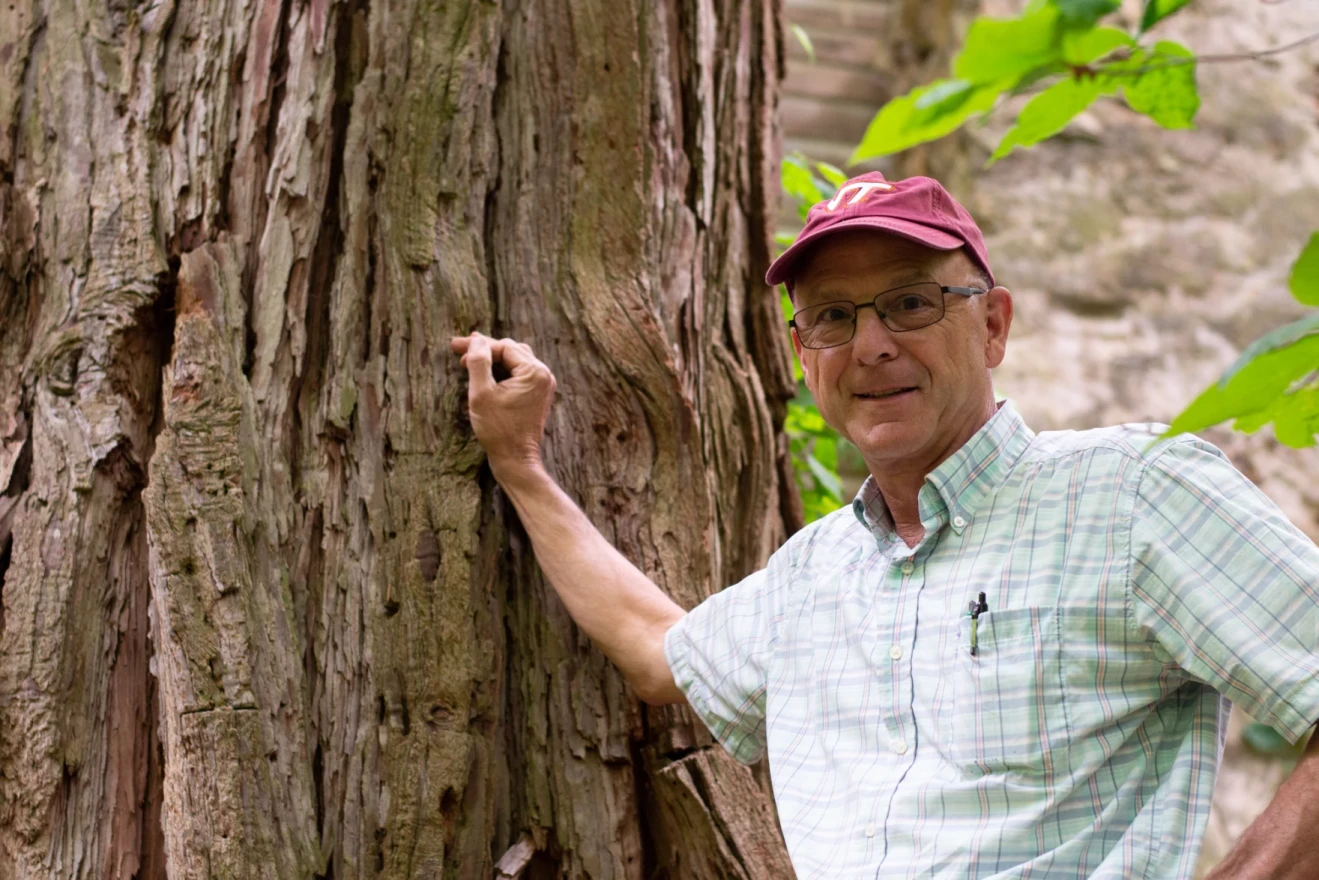
“They were distant kin of us, but anyways, they lived back here in the hollow,” he said.
Saunders grew up in the area, and helps run his family's plant nursery and orchard business.
He pointed out the tree; one that pictures could not do justice to due to its sheer size.
“Look at that one — that one has fallen over top of the house. But yeah, I reckon this is the one you're looking for.”
This tree is so tall, and surrounded by such dense foliage, that you can't see the top of it from the ground. Bark runs up the trunk in pale, cracked canyons.
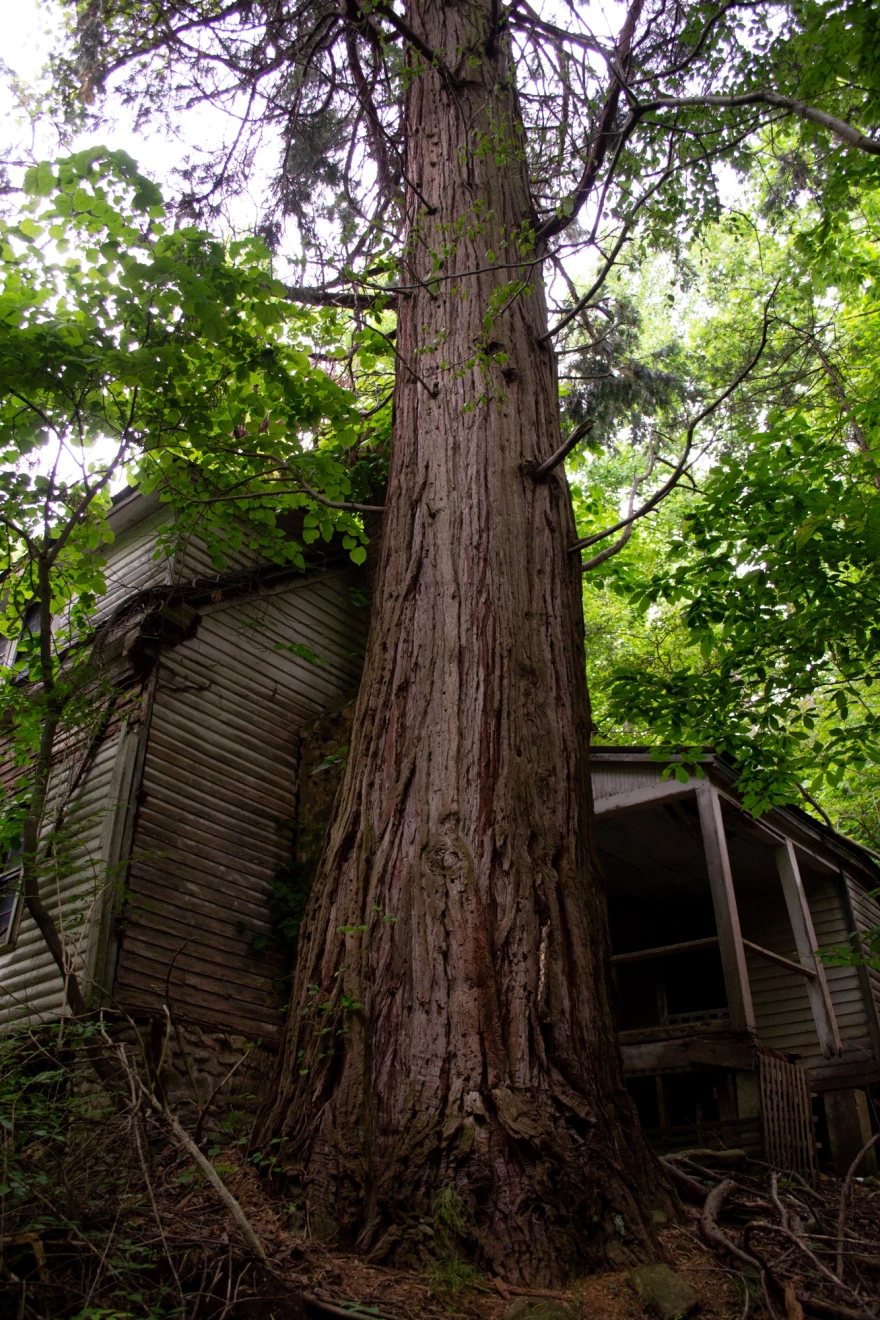
Saunders has never seen a tree like that one anywhere in the mountains. He said he’s hunted his whole life in the mountains.
The champion tree is nestled against an old log cabin that was added onto and resided as its former inhabitants — the Thompson family — grew. Greg Zell, a retired naturalist, was the last person to measure the tree. It came in at 120 feet in 2015. He noted that Nelson County is pretty far south for this species to grow.
Northern white-cedars are normally found in Canada and the northern states, so they're not really rare in Virginia, but they're in a sort of patchy distribution coming down the Appalachians.
He thinks it was’t planted by human hands, but that it grew there naturally.
“This tree could have been, you know, 450 to 480 years old. That would make it before Captain John Smith's first trip to Virginia. And I know it's a — pretty sure it's a natural tree; it was growing there by itself, because in the first photo of the old farmhouse, where people were standing around it, that tree was much, much, much older already, at that time, than the house was,” Zell said.
There's a photo from 1932 in the book Mountain Folk: More Oral Histories of the Appalachian People by Lynn Coffey that appears to show this tree growing near a corner of a porch. It was already impressive then — and it's absolutely imposing now, 90 years later.
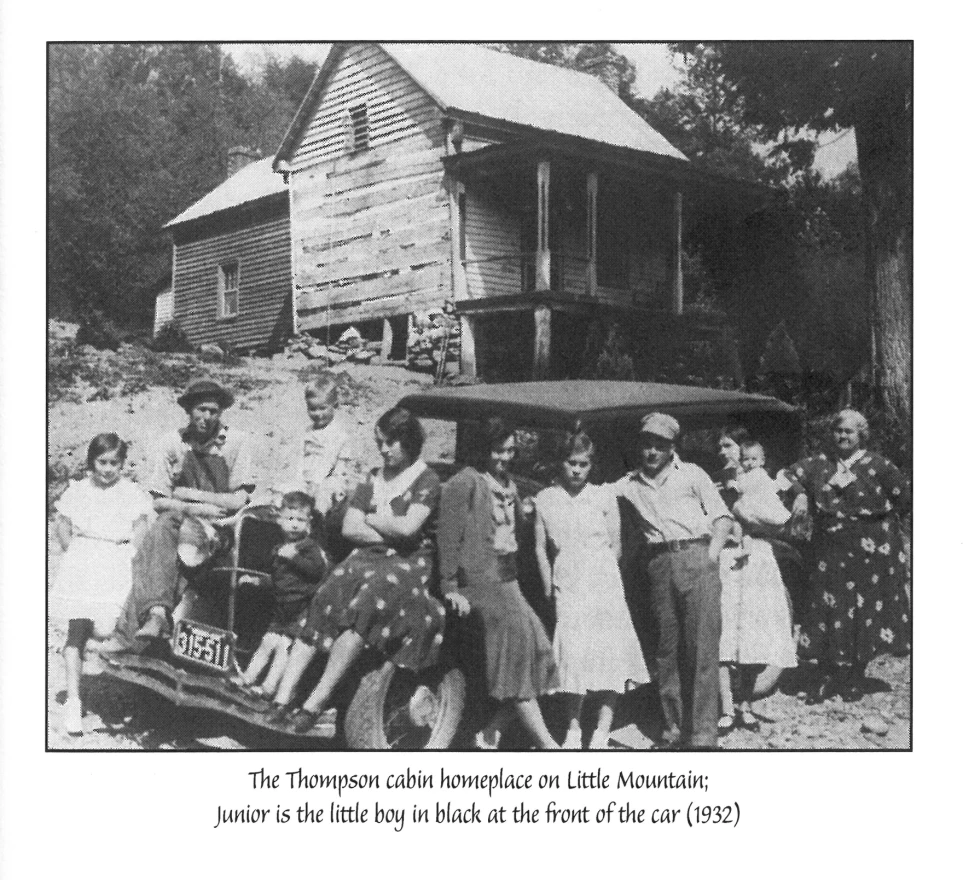
In that photo, a toddler leans on the bumper of a car in front of the cabin.
William “Junior” Thompson, 94, remembers the tree being by the cabin.
“I used to go up there when I was a boy … I would say it's native,” he said.
His father, Willy, was the second oldest of 10 children. Laughing, Junior said his Granny Bessie was “a well-known lady.”
She made moonshine and hosted dances at the house. The family grew corn and raised hogs, chickens, and cows.
“That was a way of life, moonshine,” he said. “I have seen lots of moonshine in my life, when I was a boy back in the late ’30s. The going price for moonshine when I was a boy – $2 per gallon.
I concluded my big tree tour in Page County, which is home to two national champions. One is a 30-foot-tall pussy willow – an auspicious height for a species normally considered a shrub. The broad spread of branches overlooks rolling farmland and the distant Blue Ridge Mountains. Judy Moyer very kindly let me photograph the tree after I showed up on her doorstep. She planted the pussy willow — "her baby," as she called it — in 1977.
About 10 miles up the road, I met the South Fork of the Shenandoah River for the second time on my tour. I was looking for the largest documented American bladdernut in the country.
Famed big tree hunter Byron Carmean found this specimen while visiting friends.
“Of course, whenever I go anywhere, I'm scanning around, looking at what's there, and I saw a number of bladdernuts growing — and understand, it's a small species. It doesn't get — you don't compare them to oaks or maples. These were the biggest ones I'd ever seen, and I think I measured two on that site,” he said.
I spotted them near a boat launch on the river.
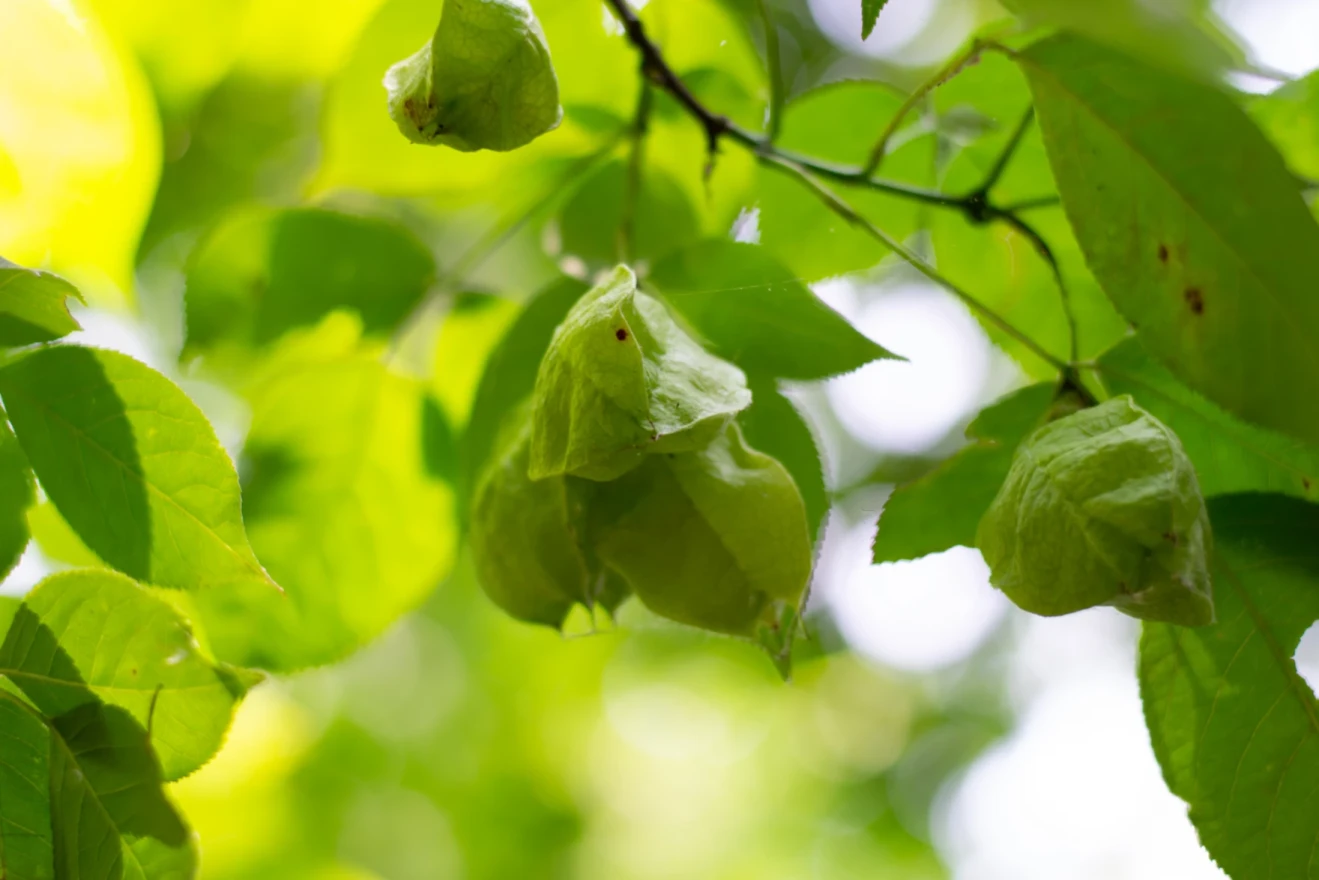
The bladders are the namesake of the tree; fruit that has a little husk around it. It looks more like a tomatillo, and the fruit falls off the tree, rolls down a hill, plops into the river and its husk makes it just buoyant enough that it can float downstream and find itself somewhere else.
With the bladdernut marking the end of my tour, I sat at the river's edge, looking out over the mountains, and reflecting on something Greg Zell said about why these trees are so compelling.
“We're all used to going into museums and looking at dead stuff and reading things on the plaque, but these are living pieces of history, which make them so much different than an old house or an old artifact. They're alive, and think of the things that these trees have, well, metaphorically seen and lived through, for — in some cases — hundreds of years.”


